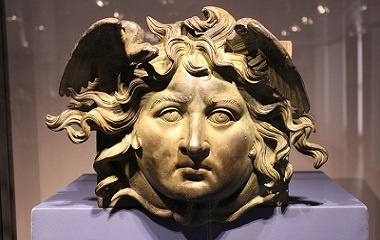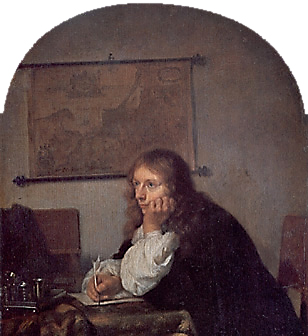The girl from Queens is quiet and shy—one of the smallest students in her seventh-grade class, she is also hearing impaired and wears special headphones connected directly to a microphone that each of her teachers must wear… that is, when she gets up the nerve to remind them. Now, while her classmates yell and play and wait for their teacher to return from a brief sojourn into the hall, she sits silently, writing on a piece of unlined paper, apparently oblivious to the caterwauling going on around her:
LITZY, 7th Grade, Queens
I still remember the waves of the ocean:
there is always a light when you become brave
and show the world who you really are…
This incredibly bold statement of potentiality— from what seems such an unlikely source—is more than simply an example of the kind of magic that can occur when you connect students’ creative writing to their history and social studies texts: it is a testament to the fantastic work that can be done while aligning curriculum with the Common Core State Standards, which have now been adopted by 46 states and the District of Columbia.
At this point, anybody reading this probably knows exactly, in more or less specificity, what the Common Core Standards are. The set of “principles,” written by the National Governors Association Center for Best Practices and the Council of Chief State School Officers, has the same simple goal most educational initiatives have: to help ensure students in the US are prepared to enter and succeed in college courses when they graduate from high school. And as with most educational initiatives, implementation of these standards has been fraught with controversy: standards mean documentation, mean testing, mean specific structures, and, in a sense, mean someone else telling you what to do in your classroom—the kinds of things that, some think, make Kafka cringe, Orwell an oracle, and our students automatons still stuck in the factory schooling system of the 1950s.
For teaching artists and others who understand the importance of the arts in education, the Common Core State Standards present another challenge: how can we complement the intention of these standards and still inspire our students to be engaged with and excited about learning? We know that the kind of inspiration arts education provides is key to the positive learning outcomes that are the Common Core’s raison d’être, but for writers in the schools working with these new standards, where does creative writing fit in?
The answer is simpler than it might seem: the Common Core can actually be an incredible gift to teachers of creative writing. It can enliven and revive a teaching artist’s best practices, while pushing us toward innovation and new ideas—things that can only boost our goals for our students.
When tasked with working with seventh-graders as they studied the Colonies and then the American Revolution in the winter and spring of 2012—my first real tangle with the Common Core—I nearly turned down the residency. To create a whole new syllabus was unenticing enough, but to do so based on the poets and writers and recordkeepers of the 1750s? While I do know in my heart that Blake, Byron, and Burns were the Beats of their day, my teaching has tended to revolve around newer poets like Brainard, Baraka, and Brooks.
In the end, though, I have found my practice blossoming under what I once would have considered the “weight” of eighteenth-century American writers. I now eagerly use primary documents like Reminiscences of a Nonagenarian, Sarah Anna Emery’s record of her mother’s memories of the Colonial Period, or George Washington’s wartime letters to Martha, as starting points for students to reimagine their own possible pasts and futures. This has led to teachers telling me time and again how this work has increased their students’ engagement during discussions of their standard history texts. (All this, while embracing and enforcing the Common Core!)
But the exercise that seems to fire the imaginations of my students in the most consistently surprising ways is the one Litzy was doing that day her teacher stepped out. The exercise is based on the poem “On Being Brought from Africa to America,” by Phillis Wheatley (1753–1784), and is particularly stirring for both students of color and girls, while offering the chance for every student to imagine the circumstances of their own immigration stories.
Wheatley’s story is inspiring on its own: sold as a seven-year-old from West Africa, she overcame the fact that teaching slaves to write was illegal during the Colonial Period to become the first published African-American poet in history. The fame that this young woman acquired against such odds—George Washington praised her, and she was invited to meet King George III during a trip to England—is enough to excite young students about their own potential. But the poem itself offers a particularly fine chance to address Common Core Standards while practicing the kind of creative writing we teaching artists are best at:
‘Twas mercy brought me from my Pagan land, Taught my benighted soul to understand That there’s a God, that there’s a Saviour too: Once I redemption neither sought nor knew. Some view our sable race with scornful eye, “Their colour is a diabolic die.” Remember, Christians, Negros, black as Cain, May be refin’d, and join th’ angelic train.
The poem is dense, first and foremost, and therefore begs to be broken down line by line, nearly word by word, in exactly the way students will have to break down writing when they take their assessments later. But as it is unpacked, students find the richness that lies within: the story of the girl, brought from Africa in a violent and horrible way, who yet embraces the positive aspects of her forced emigration: through it she has come to know the comforts of religion. But it doesn’t stop there: because then, with that knowledge, Wheatley uses the very terms of that religion to call out the injustices she sees all around her. The poem is therefore startling, powerful, and ironic, all at once—just the things students love about the poets I usually teach. But more than that: it also touches directly on nearly every single Common Core reading standard, as well as the literacy standards for history/social studies, and of course many of the writing standards, too, as you’ll see below.
After breaking the poem down, I ask students to imagine themselves back in that time: who would they have been, back then? From where would they be coming to the Colonies? Under what circumstances? What would it feel like to come somewhere new, all by themselves? And, too, I ask them to think about their own “journeys.” When working with immigrant populations those are often literal, but with other groups of students they become journeys of the mind: journeys into their family’s past, their own future. Then it’s time to get writing. I ask the students to follow Wheatley’s form, if not her language: to start by describing how they would have travelled to the Colonies and the things they might have seen along the way. What did they leave behind? And what did they find when they got here? What kind of transformations might have taken place within them as they arrived? Finally, I ask them to point out the things they see around them that need to be transformed—the inequalities, unfairness, or problems they can imagine in the past, or even see in their own lives now.
The results, as I said, can show the powerful connection to historical context so desired in the Common Core:
GIOVANNY, 7th Grade, Queens
. . . walking step by step
of hurting
beating marks on back
God is helping me
to come back
starving to death
without no health
running away
to a better place . . .
Or they can show excitement at the mere idea of escape implied in a journey:
SEAN, 7th Grade, Queens
and the ride
went on
and on
and I sang a lovely song . . .
The students take the text and they make it their own: they show nuance and depth, insight and understanding, and in so doing bring a new emotional life to their previous understanding of the time period:
RUTH, 7th Grade, Manhattan
As I lay on the hard wooden bed
all alone, not a sight or a sound
no one to hold me and say they love me
I longed for her voice and comfort
the stories she read to me
the way she held me in her hands
I heard her laughing in my head
and wished to see her smile.
The outcomes can be astounding, but even more, they outline a clear path for creativity amongst the Common Core hedgerows. Creative writing and standards, linked like this, couldn’t be less opposing: they inform, inspire, and enhance each other, with the Common Core forcing teaching artists to bring new life to their work, and creative writing leading directly—and in amazing ways—toward proficiency in the Common Core. Together, they can bring a perspective and depth to student writing that, after all, is one of the gifts the arts offer us.
And then there is the other gift: the revival and revelation that can come from the challenge of teaching with a different idea in mind. For me, no Common Core = no Phillis Wheatley—and for Litzy, the girl from Queens who sat quietly writing while the other students in her class bounced off the walls, it was Wheatley—and Wheatley specifically—who was the catalyst for her declaration of future strength, as the rest of her poem clearly states:
. . . that we are brave and strong
just like the others
we are not weak
we are mighty
strong
and powerful
This article originally appeared in Teachers & Writers Magazine, Fall 2013.



